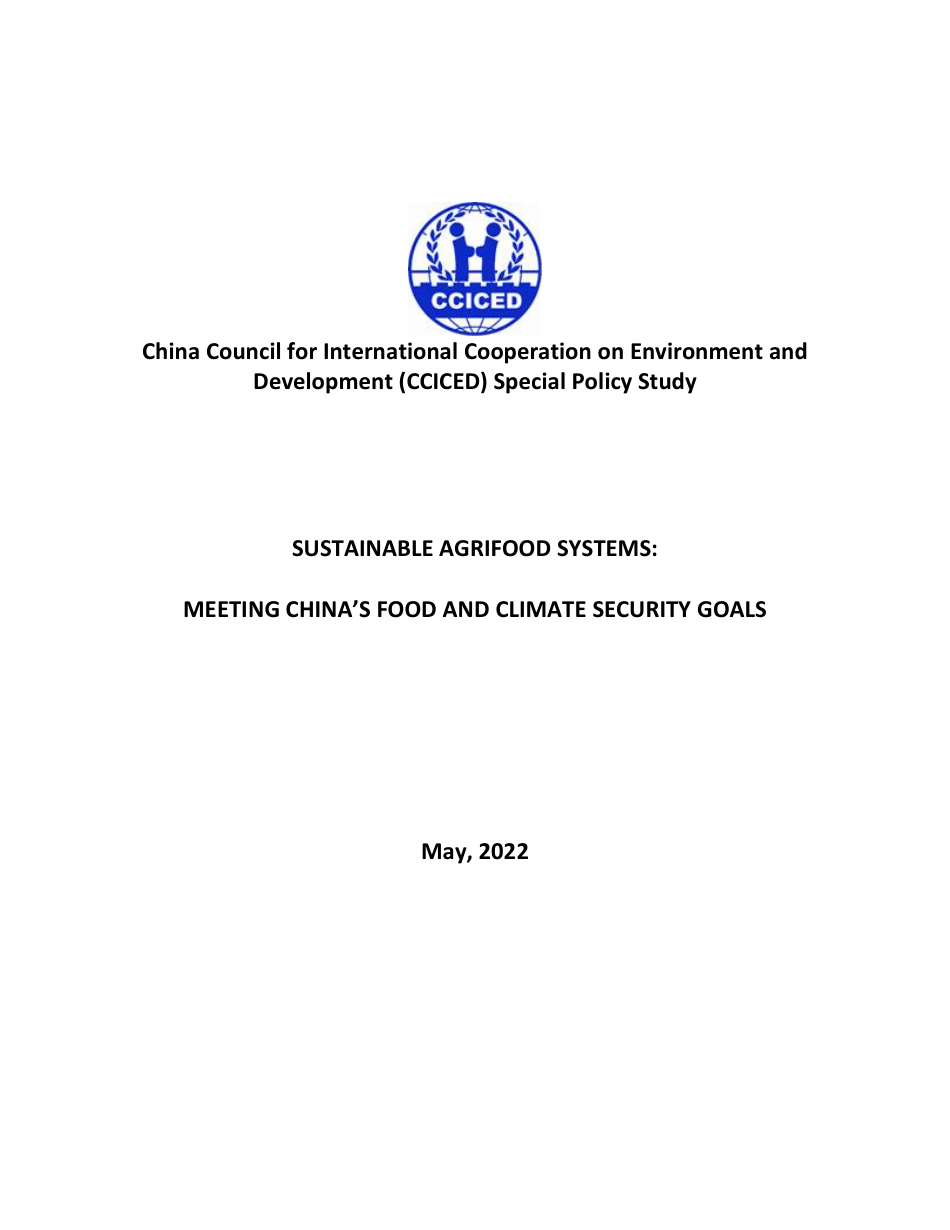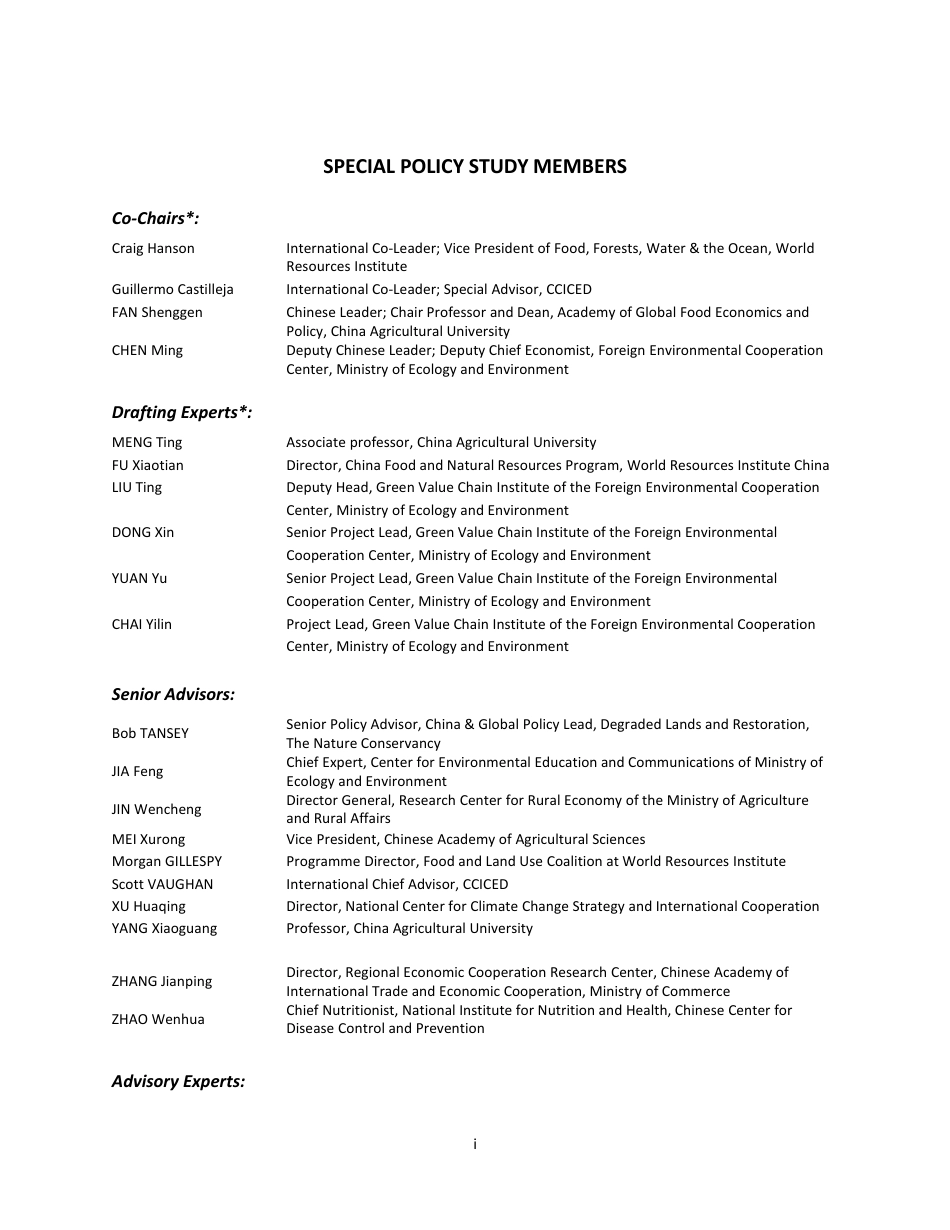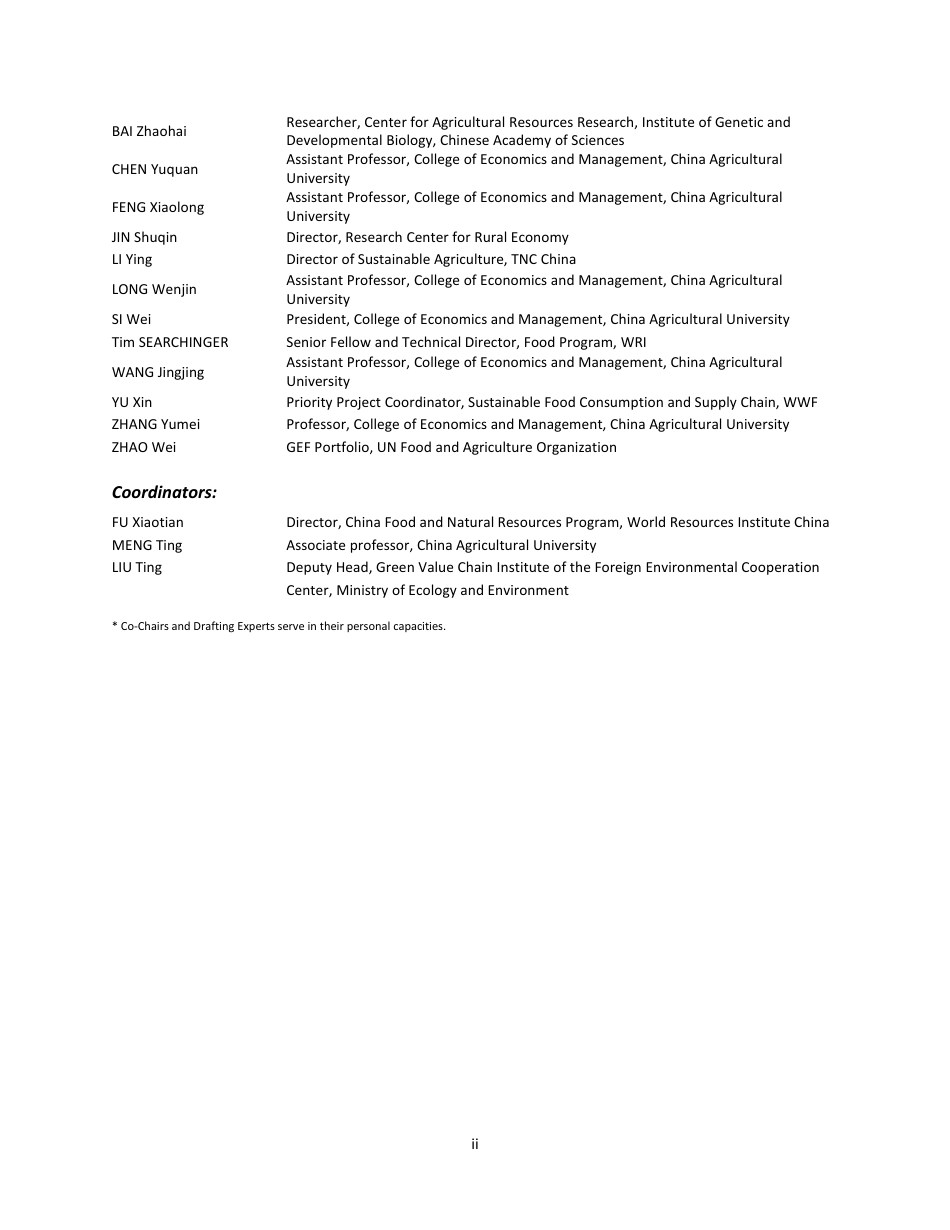China Council for International Cooperation on Environment andDevelopment (CCICED) Special Policy StudySUSTAINABLE AGRIFOOD SYSTEMS:MEETING CHINA’S FOOD AND CLIMATE SECURITY GOALSMay, 2022iSPECIAL POLICY STUDY MEMBERSCo-Chairs*:Craig HansonInternational Co-Leader; Vice President of Food, Forests, Water & the Ocean, WorldResources InstituteGuillermo CastillejaInternational Co-Leader; Special Advisor, CCICEDFAN ShenggenChinese Leader; Chair Professor and Dean, Academy of Global Food Economics andPolicy, China Agricultural UniversityCHEN MingDeputy Chinese Leader; Deputy Chief Economist, Foreign Environmental CooperationCenter, Ministry of Ecology and EnvironmentDrafting Experts*:MENG TingAssociate professor, China Agricultural UniversityFU XiaotianDirector, China Food and Natural Resources Program, World Resources Institute ChinaLIU TingDeputy Head, Green Value Chain Institute of the Foreign Environmental CooperationCenter, Ministry of Ecology and EnvironmentDONG XinSenior Project Lead, Green Value Chain Institute of the Foreign EnvironmentalCooperation Center, Ministry of Ecology and EnvironmentYUAN YuSenior Project Lead, Green Value Chain Institute of the Foreign EnvironmentalCooperation Center, Ministry of Ecology and EnvironmentCHAI YilinProject Lead, Green Value Chain Institute of the Foreign Environmental CooperationCenter, Ministry of Ecology and EnvironmentSenior Advisors:Bob TANSEYSenior Policy Advisor, China & Global Policy Lead, Degraded Lands and Restoration,The Nature ConservancyJIA FengChief Expert, Center for Environmental Education and Communications of Ministry ofEcology and EnvironmentJIN WenchengDirector General, Research Center for Rural Economy of the Ministry of Agricultureand Rural AffairsMEI XurongVice President, Chinese Academy of Agricultura...



